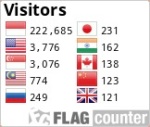Synergy between Badan Amil Zakat Nasional and Badan Wakaf Indonesia to Strengthen Waqf Assets in Central Java
DOI:
https://doi.org/10.26623/jic.v10i1.11542Keywords:
Productivity, waqf, waqf institution, zakat institutionAbstract
This research aims to analyze the synergy between Badan Amil Zakat Nasional (Baznas) and Badan Wakaf Indonesia (BWI) and to examine the obstacles and impact of synergy between both. Baznas and BWI are the two government agencies tasked with managing the muslim community assets; Baznas is tasked with collecting and utilizing zakat, while BWI is responsible for managing waqf assets. The zakat funds collected by Baznas are relatively large, but many have not been distributed. On the other hand, BWI has many waqf assets but does not have the funds to make them productive. Based on the strengths and weaknesses of each, cooperation between the two is crucial to be strengthened. This article is a qualitative research with a normative-empirical approach. The results of the research show that the synergy between the two is held in communication and coordination. The obstacles to synergy are related to funding for asset development, nazir's professionalism, lack of legalization of waqf assets. The synergy between Baznas and BWI has not had a significant impact on the development of productive waqf assets in the Central Java province. If both work together synergistically, they can generate a more beneficial and productive waqf for the ummah, as seen in the case of the Johar Market relocation and the establishment of healthcare services in the form of hospitals for the benefit of the community. This article complements the theme around the importance of synergy between waqf institutions so that the benefits of waqf and the sustainability of its management can run optimally, just as the commitment of both institutions to financial reporting is important, making nazir more professional can be achieved by providing training and establishing partnerships with other, more competent institutions.
References
Bahri, Efri Syamsul. “The Proposed Model for Successful Cash Waqf Management for Waqf Institutions in Indonesia.” ITQAN: Journal of Islamic Economics, Management, and Finance 2, no. 1 (2023): 1–9. https://doi.org/10.57053/itqan.v2i1.13.
Bungin, Burhan. Penelitian Kualitatif. Jakarta: Kencana Prenada Media Grup, 2008.
Covey, R. Stephen. The 7 Habits of Highly Effective People. India: Manjul Publishing House Pvt Limited, 2004.
Fathuddin, Agus. “MAJT-MAS Bangun Rumah Sakit, Disiapkan Dana Rp 62 Miliar.” Suara Merdeka, September 18, 2021. https://www.suaramerdeka.com/semarang-raya/pr-041138696/).
Faujiah, Ani, Achmad Sjamsudin, Amiliya Nurul Fajriyah, and M Toyib Afandi. “Integrasi Wakaf Dan Pendidikan: Lembaga Gerakan Wakaf Indonesia Dalam Mendukung Magang Di Era Merdeka Belajar.” Ekosiana: Jurnal Ekonomi Syariah 11, no. 2 (2024): 97–114. https://doi.org/10.47077/ekosiana.v11i2.513.
Furqon, Ahmad. “Model-Model Pembiayaan Wakaf Tanah Produktif.” Economica: Jurnal Ekonomi Islam 1, no. 5 (2014).
Geller, S.E. Interpersonal Trust, Professional Safety, 1999.
“Grafik Jumlah Dan Luas Tanah Wakaf,” 2025.
Hardiyanti, Lesha, and Taupiqqurrahman Taupiqqurrahman. “Investor s Obligations in Default Dispute of Build Operate Transfer Agreement for Market Revitalisation.” Ius Constituendum 9, no. 1 (2024): 160–77. https://doi.org/10.26623/jic.v9i1.8648.
“Interview with Azwar Hakiem (BWI Secretariat Staff Central Java Representative).” 2022.
“Interview with Chandra Eka Sakti (Head of the Central Java Baznas Secretariat Division).” Semarang, 2022.
“Interview with KH. Ahmad Darodji (Chairman of Baznas Central Java and Advisor to BWI Central Java Representative).” 2022.
Kurdi, Kurdi, Prita Amalia, Yuki Mahardhito, and Adhitya Wardhana. “Harmonization of Funding for Government Cooperation with Small-Scale Public-Private Partnership.” Ius Constituendum 9, no. 3 (2024): 513–29. https://doi.org/10.26623/jic.v9i3.10536.
“Laporan Keuangan Baznas Bulan Juni 2021,” 2021. https://baznas.go.id/keuangan/juni-2021.
Moekijat. Koordinasi (Suatu Tinjauan Teoritis). Bandung: Mandar Maju, 1994.
Mufarrochah, Sylvia, Febri Falisa Putri, Achmad Murtadho, and Elsa Assari. “Etika Bisnis Dalam Hukum Islam : Implikasinya Terhadap Praktik Bisnis Modern Business Ethics in Islamic Law : Implications for Modern Business Practices.” USM Law Review 8, no. 1 (2025): 17–32. https://doi.org/10.26623/julr.v8i1.11365.
Muhammad Budi Buchari Harahap, Darwanto. “Peran Strategi Badan Wakaf Indonesia (BWI) Dalam Meningkatkan Profesionalisme Nazhir Kota Semarang.” Tawazun: Journal of Sharia Economic Law 4, no. 1 (2021): 104–20. https://doi.org/http://dx.doi.org/10.21043/tawazun.v4i1.10192.
Mulianto, Sindu. Panduan Lengkap Supervisi Diperkaya Perspektif Syariah: Menuju Supervisi Yang Profesional, Beretos Kerja Tinggi, Dan Amanah. Jakarta: Gramedia, 2006.
Munawar, Wildan. “Profesionalitas Nazir Wakaf: Studi Manajemen Wakaf Produktif Di Lembaga Wakaf Daarut Tauhiid.” Journal of Islamic Economics and Finance Studies 2, no. 1 (2021): 17. https://doi.org/10.47700/jiefes.v2i1.2731.
Nur, Mukhlish Muhammad, Muhammad Ramadhan, Yenni Samri, and Juliati Nasution. “Strategic Development Of Productive Waqf in Aceh: An ANP Approach” 13, no. 2 (2024): 770–805. https://doi.org/10.22373/share.v13i2.24362.
Rahman, Rezi Alfarizi, and Atik Winanti. “Perlindungan Hukum Bagi Pembeli Hak Atas Tanah Dalam Sengketa Warisan Siraso-Raso Sumatera Utara.” USM Law Review 8, no. 1 (2025): 47–64. https://doi.org/https://doi.org/10.26623/julr.v8i1.9473.
Rasela, Fitriani. “Pengaruh Literasi Wakaf Terhadap Minat Mahasiswa Berwakaf Pada Forum Wakaf Mahasiswa Indonesia.” Jurnal Riset Perbankan Syariah 1, no. 1 (2022): 69–76. https://doi.org/10.29313/jrps.v1i1.969.
Shiddiqy, Muhammad Ash-, Makhrus Makhrus, and Muhammad Ghafur Wibowo. “Cash Waqf Management for Education: Challenges, Solutions and Strategies.” Shirkah: Journal of Economics and Business 9, no. 2 (2024): 275–89. https://doi.org/10.22515/shirkah.v9i2.723.
Sugiyono. Memahami Penelitian Kualitatif. Bandung: Alfabeta, 2005.
———. Metode Penelitian Kuantitatif Kualitatif Dan R&D. Bandung: Alfabeta, 2016.
Sulasmi, S. “Kontribusi Perilaku Kelompok, Karakteristik Anggota Kelompok Dan Kepemimpinan Pada Usaha Untuk Membangun Kualitas Sinergi.,” 2003.
Supriyadi, Supriyadi, Diah Sulistyani Ratna Sediati, and Nafis Dardiri. “Implementasi Pengaturan Pendaftaran Tanah Dalam Pembatalan Peralihan Hak.” USM Law Review 6, no. 2 (2023): 554–70. https://doi.org/10.26623/julr.v6i2.7223.
Susilo, Sri Najiyati dan S.R. Topo. “Sinergitas Instansi Pemerintah Dalam Pembangunan Kota Terpadu Mandiri (The Synergy of Goverment Institutions in The Transmigration Urban Development).” Jurnal Ketransmigrasian 28, no. 2 (2011). https://d1wqtxts1xzle7.cloudfront.net/30373238/sinergitas_instansi_pemerintah_dalam_pembangunan_kota_terpadu_mandiri-libre.pdf?1390885826=&response-content-disposition=inline%3B+filename%3DSINERGITAS_INSTANSI_PEMERINTAH_DALAM_PEM.pdf&Expires=1670421102&Si.
Suyatno, and Mukhaer Pakkana. “Management and Development of Productive Waqf for Islamic Boarding Schools in Kampar Regency.” Indonesian Interdisciplinary Journal of Sharia Economics (IIJSE) 7, no. 1 (2024): 395–422.
Wakaf, Direktorat Pemberdayaan Zakat dan. “Data Tanah Wakaf,” 2021. http://siwak.kemenag.go.id/index.php.
———. “Jumlah Tanah Wakaf Seluruh Indonesia,” 2021. http://siwak.kemenag.go.id/tabel_jumlah_tanah_wakaf.php.
Yafi, Lukman. “Productive Waqf Development Strategy to Grow Community Economy in Selangor Malaysia.” Demak Universal Journal of Islam and Sharia 2, no. 03 (2024): 189–98. https://journal.walideminstitute.com/index.php/deujis/article/view/111.
Downloads
Published
Issue
Section
License
Copyright (c) 2025 Jurnal Ius Constituendum

This work is licensed under a Creative Commons Attribution 4.0 International License.
The journal holds the copyright for each article published with work licensed simultaneously under a Creative Commons Attribution 4.0 International License, which allows others to share the work with an acknowledgment of the authorship and early publication of the work in this journal.










